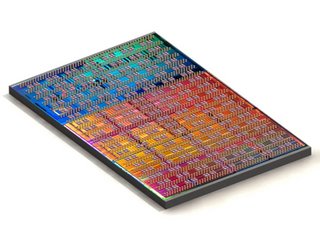
Posted by John Keller
Our community has a lot of board and systems designers who are tearing their hair out over how to cool powerful electronics packaged into tight spaces like unmanned aerial vehicles.
Exotic cooling methods such as liquid flow-through cooling and liquid spray cooling, although they are approaching the mainstream, are still complex, expensive, take up space and power, and introduce maintenance issues that most engineers simply would rather not deal with.
Now a company in North Carolina called Nextreme Thermal Solutions Inc. has come up with a way to package heat exchangers that are as small as 1 by 1 millimeter. The company, in fact, will start shipping heat exchangers of that size later this month, says Jesko von Windheim, Nextreme's CEO.
Board designers are struggling with ways to delay or avoid the switch from conventional cooling methods such as conduction and convection cooling to the exotic liquid approaches, and Nextreme's solution just might do the trick. The technology, which Nextreme calls the Thermal Copper Pillar Bump, can be RoHS compliant, or can be supplied to the military with traditional tin-lead solder.
Nextreme's solution, which uses copper pillar bumping used in high-volume electronic packaging, also can generate small amounts of power from ambient heat. It's not enough to power the heat exchangers themselves, but it does have some engineers thinking.
Aircraft designers at Boeing, in fact, are considering Nextreme's devices to power the window-darkening feature on the future 787 Dreamliner commercial aircraft. The 787's windows will be one-third larger than conventional jetliner windows, thanks to the aircraft's composite structure, and the windows will be able to lighten and darken a substitute for common aircraft window shades.
One of the best areas for Nextreme's tiny heat exchangers is to cool hot spots on chips or on boards. If designers are trying to get the heat out of these troublesome hot spots, they might want to give this a look. Nextreme is on the Web at www.nextremethermal.com.
No comments:
Post a Comment